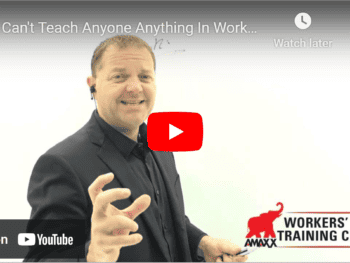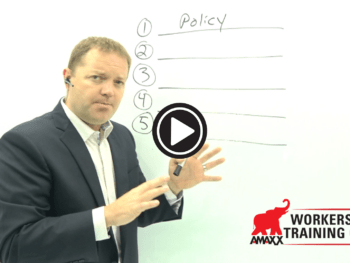Whether your company decides to go “in-house” or “out source” the process toward building an effective workers’ compensation and/or evaluating what you currently have in place, we recommend seven methods for gathering information needed to make a careful, productive assessment. The method(s) chosen may depend in large part on budgetary restrictions and the amount of time personnel can invest.
1. Self-evaluation Questionnaires
Prepare “open-ended” questions, (not “yes”/”no”) for the employer, claims handlers, treatment providers, and attorneys. Open-ended questions encourage respondents to describe how effective they really believe certain practices or procedures are.
The drawbacks to written questionnaires are they require more time to complete; written answers may be less candid as rapport is not developed with the questioner; questions need to be complete enough to gather the right information, but simple enough so respondents actually answer them.
2. Telephone Interviews
Very useful for conducting follow-ups or companies with numerous locations, telephone interviews use the same questionnaire(s) developed for self-evaluation. More information can be gathered because the interviewer establishes a direct, person-to-person relationship with the interviewee. Also, based on responses, more in-depth inquires can be made.
3. On-site Interviews
Person-to-Person interviews are probably the most effective way to elicit accurate information from managerial level personnel as valuable insights are more frequently offered during the personal interview. Questions need to be detailed enough to enable each manager to express ideas on the key cost drivers and possible cost reduction solutions. Conduct interviews with these departments — safety, finance and operations, risk management, medical treatment providers, in-house medical, claim handlers, workers’ compensation attorneys, and union officials.
Encourage group interviews as a way to discover “gaps” in important procedures due to the duplication of responsibilities between human resources, risk management, safety and medical. Gaps often not recognized by the participants. Follow-up this group meeting with brief individual interviews as necessary to clarify and elicit sensitive information not necessarily divulged during a group meeting.When employers use the Workers Comp Kit.com assessment tools, it's a very effective group interview.
4. Employee Focus Groups
Direct employee input from a small group offers key observations about their understanding of how the workers’ compensation system works, how injured workers are treated, and what steps can be taken to improve the system. Develop focus group guidelines designed to keep the discussion focused on relevant issues.
Group discussion may uncover whether employees use the workers’ compensation system to resolve human resource problems. Are employees really injured, for example, or are they angry and/or frustrated, and using work comp claims as a vehicle to express indirect frustration with their jobs? Develop focus group guidelines designed to keep the discussion focused on relevant issues.
5. Physical Review of Documentation
A physical review determines what written procedures are in place and how well they are followed. Include a review of workers’ compensation policies, procedures, forms, employee brochures, pamphlets and newsletters. Written materials need to be written at a sixth grade level for the average person as opposed to 11th or 12th grade, a la the New York Times. Consider if languages other than English are appropriate for your workers.
6. Reviewing Loss Data
To help complete the analysis of key cost drivers, review loss data to determine the causes of losses and allocated expense ratios and percentage of medical costs versus indemnity costs percentages. (workersxzcompxzkit)
7. Physical Review of Claim Files
The claims file reviewer must decide whether file handling is proactive or reactive, and is properly focused on rapid claim closure. Both opened and closed files are reviewed to find the quality of file handling in the past. A physician or experienced claim representative reviewing files notes whether medical care is well coordinated, of good quality, if medical bills are reviewed for duplication and fee schedule compliance, if strategies for claim closure are in place and being followed, and if time out of work is proportionate to the degree of disability. Overlap of other disability policy payments must be ferreted out as well.
8. Chairside Observation of Your Adjuster
The claims process can seem mysterious, so sitting "chairside" is the best way to find out how the process works from the TPA side. You can't possibly evaluate the workers comp process effectively without doing a chairside observation session with key staff at the TPA such as intake coordinator, claims supervisor, lost time adjuster, med-only adjuster, and "enhanced" medical adjusters. You won't regret spending a few hours of your day to gather information and knowlege this way. Trust me, after 25 years helping employers reduce their workers comp costs, I KNOW how to get the most information in the least amount of time!
Author Robert Elliott, executive vice president, Amaxx Risks Solutions, Inc. has worked successfully for 20 years with many industries to reduce Workers' Compensation costs, including airlines, health care, manufacturing, printing/publishing, pharmaceuticals, retail, hospitality and manufacturing. He can be contacted at: Robert_Elliott@ReduceYourWorkersComp.com or 860-553-6604.
Podcast/Webcast: How To Prevent Fraudulent Workers' Compensation Claims Click Here http://www.workerscompkit.com/gallagher/podcast/Fraudulent_Workers_Compensation_Claims/index.php
WC Books: http://www.reduceyourworkerscomp.com/workers-comp-books-manuals.php
TD Calculator: www.reduceyourworkerscomp.com/transitional-duty-cost-calculator.php
WC Calculator: http://www.reduceyourworkerscomp.com/calculator.php
Do not use this information without independent verification. All state laws vary. You should consult with your insurance broker or agent about workers' comp issues.












